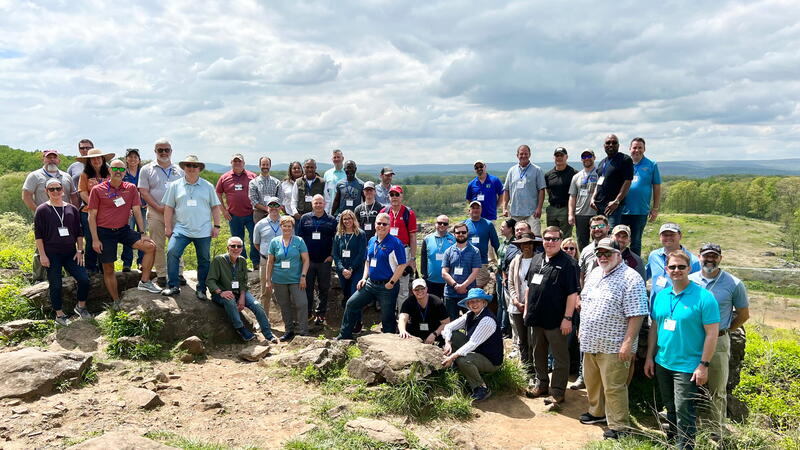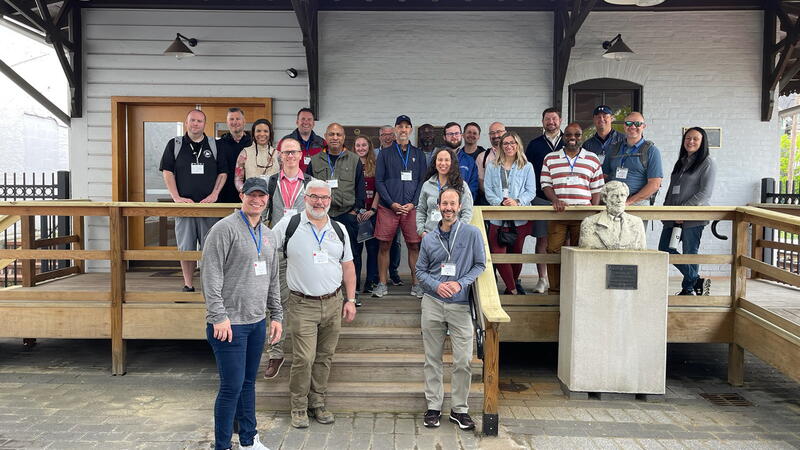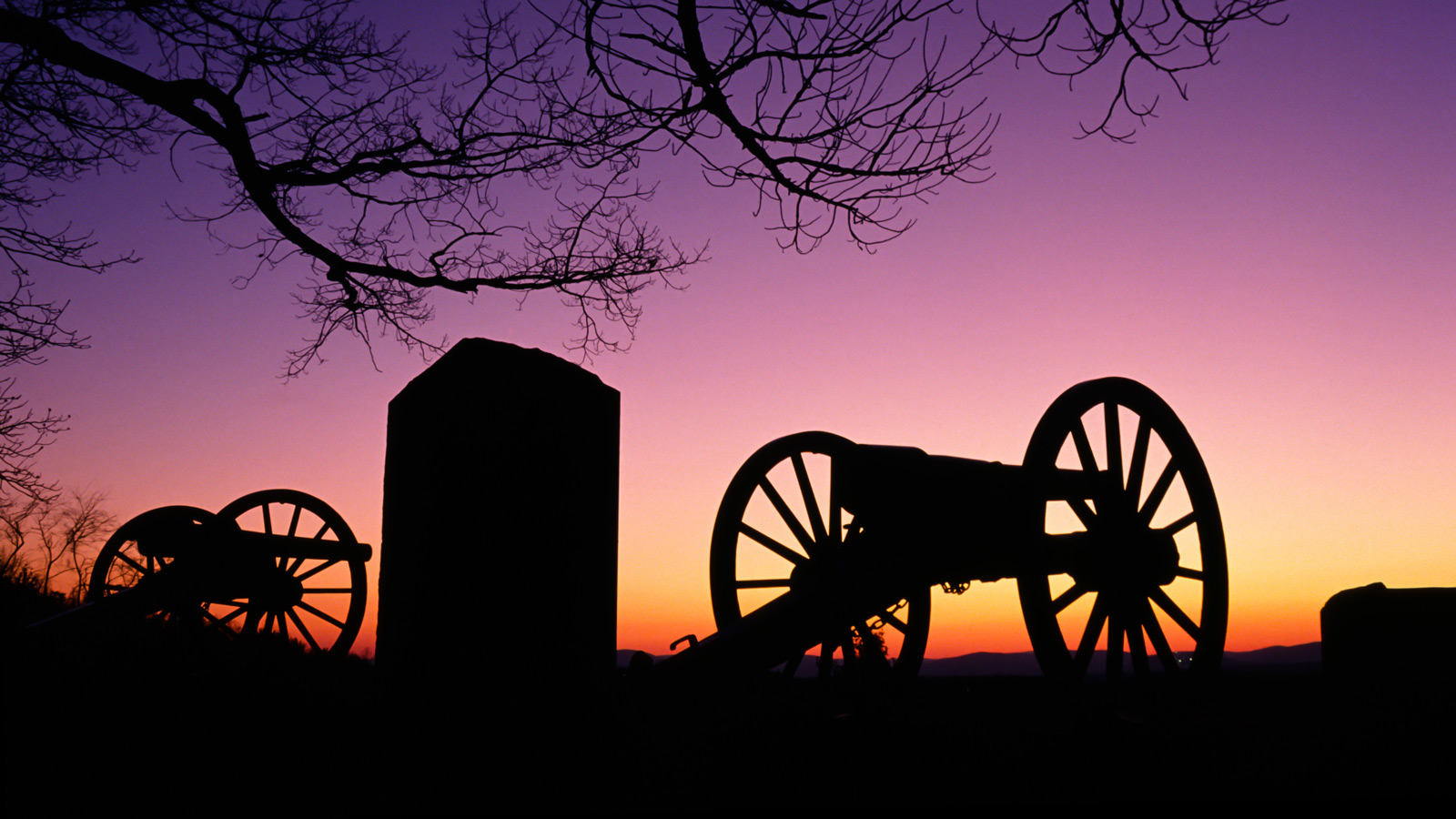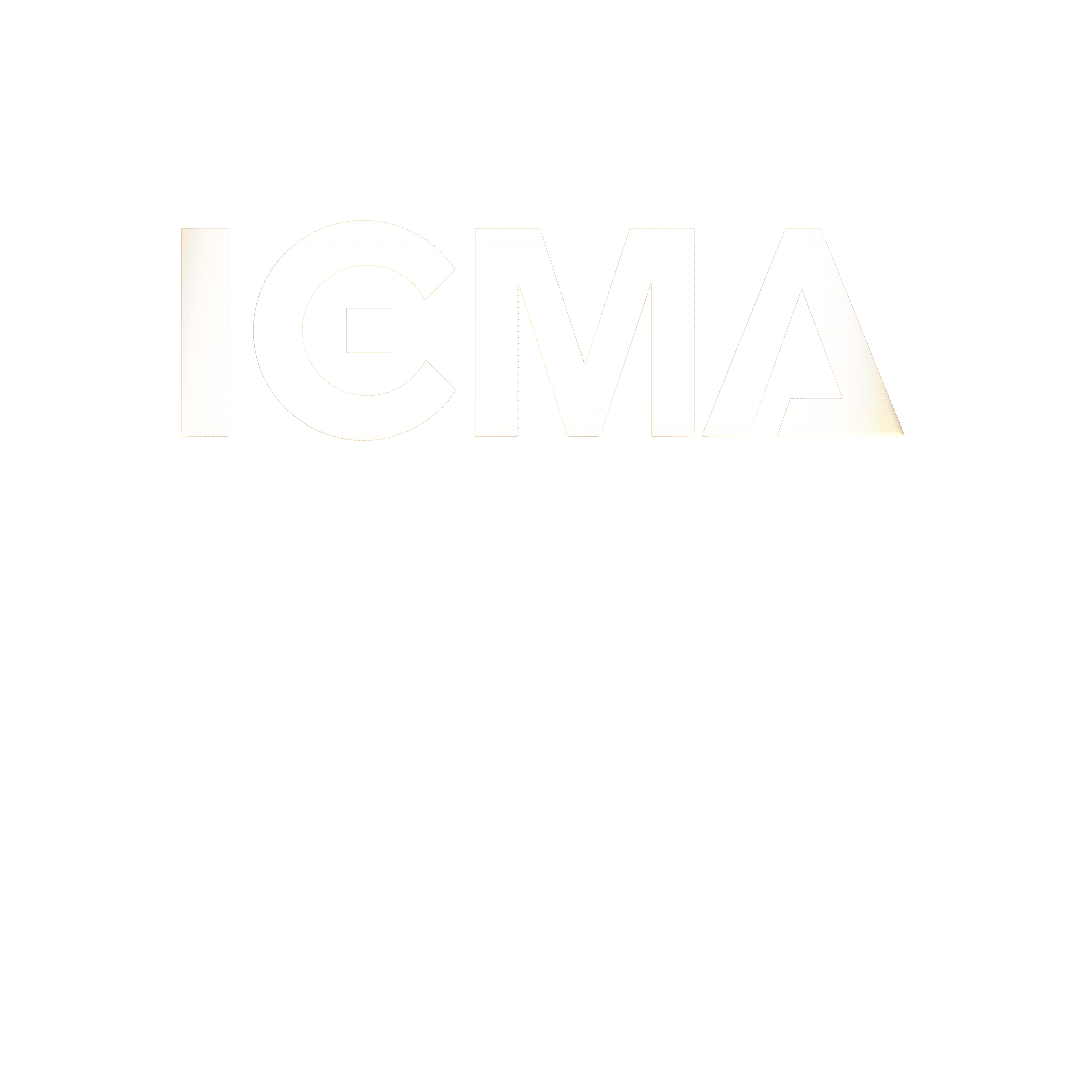We have reached capacity.
Please email njames@icma.org to be placed on our waitlist. Waitlisted individuals will be accepted on a first come-first served basis if seats become available.
Each year, a small group of senior local government managers meets to study the leadership lessons of Gettysburg. This is a unique opportunity to join colleagues in an exploration of personal leadership, organizational effectiveness, and the lessons of history.
The leadership lessons of the battle of Gettysburg, the leadership styles of those in command as well as those on the battlefield, and the aftermath or disaster recovery of the town of Gettysburg after the battle of 1863 form the core of this site specific leadership institute offered in conjunction with the Gettysburg Foundation.

What to Expect
Relate timeless, inspiring leadership lessons to the challenges your organization might face today.
- Engage for three days in an exploration of personal leadership, organizational effectiveness, and the lessons of history.
- Explore the complexity of the battle of Gettysburg, the size of the armies, and the wide spectrum of personalities, all of which offer an extensive range of perspectives that are useful to those who work in local government.
- Talk about the command structures, strategies, and methods of communication during the battle, which contain relevant examples for today’s leaders in decision-making, team building, and planning strategies for success.
- Study good and bad examples of leadership, the importance of communication, leading by example, recognizing and appropriately utilizing talent and skill, and understanding the benefits and limitations of the tools and resources available.

Who Is Right for the Program
The Gettysburg Leadership Institute is right for you if you
- Want to inspire and motivate your team to be more decisive, push their limits, and show confidence through your very own purpose and role.
- Plan to build trust in your team to create a strong, cohesive group.
- Believe that being flexible and resilient creates faith and encourages people to show respect and become engaged in community.
- Have great leadership skills and want to build on them.
- Have had to rebuild and reinvigorate your community after a crisis, or want to learn the leadership skills needed to succeed in case a situation arises.
Details
Date:
June 12 to 14, 2024
Location:
Gettysburg National Park, Gettysburg, PA 17325.
Cost:
Member: $1,695 | Nonmember: $1,895
If the class reaches capacity, contact njames@icma.org to have your name added to the waitlist.
Sample Schedule
Day One
Preparation for the leadership lessons of Gettysburg continues as we review the institute’s agenda, and begin our leadership discussion at the Sprangler Farm.
Day Two
Begins with an overview of the historical context and strategic importance of the Battle of Gettysburg. We will talk about the command structures, strategies, and methods of communication during the battle, which contain relevant examples for today’s leaders in decision-making, team building, and planning strategies for success. With the aid of a professional interpretive guide who has a rare passion for and understanding of the Gettysburg experience, we will visit the battle lines of North and South. As part of the tour, we will walk the field of the famous Pickett’s Charge. We'll study good and bad examples of leadership, the importance of communication, leading by example, recognizing and appropriately utilizing talent and skill, and understanding the benefits and limitations of the tools and resources available.
Day Three
Begins with more discussion of the impact of leadership during the battle and a study of contemporary and historical leadership styles ending with President Abraham Lincoln’s trip to dedicate the National Cemetery with a “few appropriate remarks” and which we know as the Gettysburg Address. In the afternoon, we will walk the hallowed ground of the National Cemetery with a special interpretive guide and participate in other learning activities. As part of a walking tour, we will study the impact of the battle on the population of 2,000, which had to provide services for the more than 51,000 casualties as a result of the battle. Over 152,455 men and 550 cannons were positioned in an area encompassing 25 square miles. Additionally, an estimated 569 tons of ammunition was expended and, when the battle had ended, 5,000 dead horses and the other wreckage of war presented a scene of terrible devastation, which will serve as a case study on disaster management. We will wrap up with a debriefing and an interactive question and answer session.
Professional development guidelines
This institute can help fulfill your annual professional development requirements as outlined in the guidelines for Tenet 8 of the ICMA Code of Ethics.

Background of Battle of Gettysburg
In July 1863, the turning point of the American Civil War occurred at the Battle of Gettysburg. Here, General Robert E. Lee’s Confederate army of 75,000 men and the 97,000-strong Northern Army of General George Meade met, by chance, when a Confederate brigade sent there for supplies observed a forward column of Meade’s Calvary. Of the more than 2,000 land engagements of the Civil War, Gettysburg ranks supreme. Although these battles did not end the war, nor attain any major war aim for either North or South, it remains the great battle of the war and with it brings great leadership lessons of strategy, flexibility, communication, rigor, organizational function, and dysfunction that are applicable to effective local government today.

